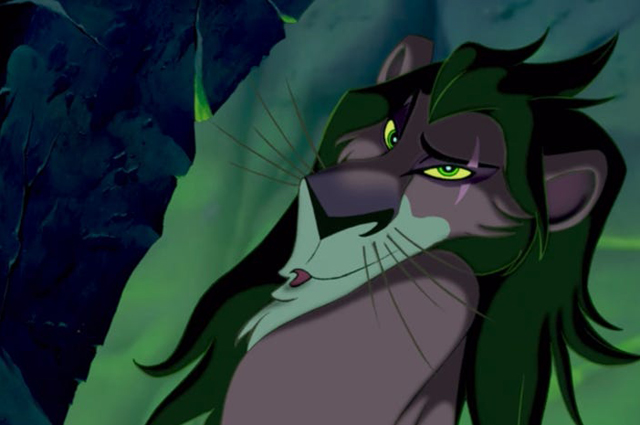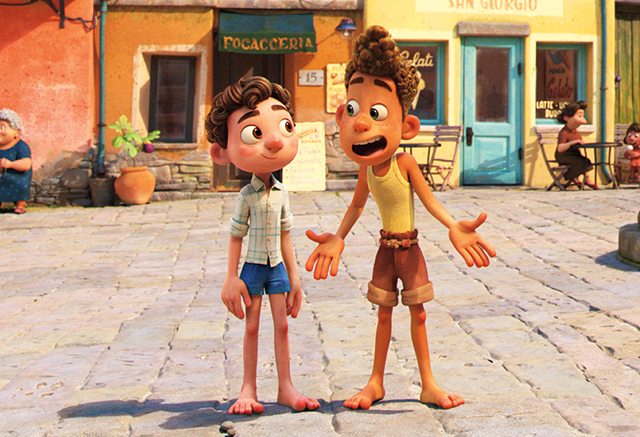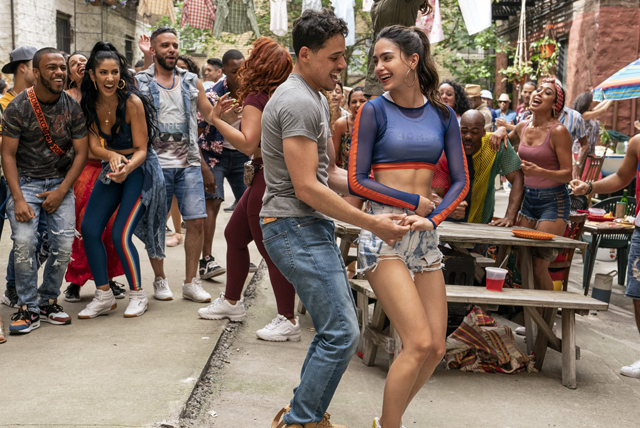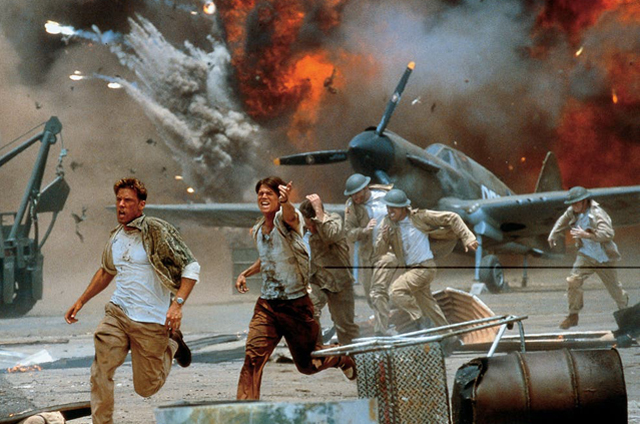
It’s Pride Month again, and each year we begin to marvel more and more at the lessening resistance to devoting a whole month to celebrating queer rights and the achievements of the LGBTQ community. While resistance to queer rights still exists out there in the larger culture, those roadblocks are growing fainter, and the rights of the Queer community becomes more and more affirmed with each successive generation. We are thankfully in a turning point in our culture where queer representation is no longer a taboo, as many fields that were closed off to gay people for years are now no longer off limits, and are in fact becoming more inclusive than anyone ever thought that they’d be. This has been especially true with fields that were distinctively defined in the past by outdated notions of gender norms. It was believed in the past that in order to be a part of something like the armed services or professional sports, you had to adhere to the strict masculine ideals that were perpetuated in the culture, and that anyone who had a same sex attraction would be breaking that norm. For years, homosexuals were barred from military service, or were threatened with expulsion if they made their sexuality public (Don’t Ask, Don’t Tell). And the idea of anyone gay playing things like professional football would’ve been laughed at. And yet today, LGBTQ service members now serve openly with the full support and approval of top brass, and just this week a Defensive Lineman for the Las Vegas Raiders came out of the closet, with the NFL, sports media, and fans almost unanimously embracing it. So what’s changed? For the most part, the outdated notions of masculine and feminine ideals have fallen away as people, particularly young people, are finding more fluidity in what it means to be a fully rounded individual. A football jock can be gay and masculine; a straight man can enjoy typically feminine things; a woman can do any job a man can do, and deserves an equal amount of pay in return. The old norms that used to unfairly marginalized queer people are thankfully receding into the background and as a result, representation that was impossible years ago is becoming more and more the norm in our society. But what is interesting about the societal norms that had previously existed is that they were perpetuated through the filter of Hollywood, long believed to be a safe haven for the queer community.
Hollywood, in general, has an interesting place in the long struggle for gay rights in America and around the world. For decades, even as the gay community was being harassed, marginalized and terrorized in other parts of the country, Hollywood itself was for the most part a place of refuge, as long as it remained hidden. People still lived in the closet in Tinseltown, but the threat of violence and even imprisonment for living as your true self was much less of a problem. Internally, the Hollywood community treated the homosexual community as an open secret, as many queer artists thrived and became part of the framework within the industry, while at the same time having to still live by the hetero-normative standards that their industry was helping to perpetuate. The reason why Hollywood couldn’t allow for full queer representation in the greater society despite the flourishing of it behind the scenes is because of a long standing roadblock called the Hays Code. Enacted as a pact between church leaders, government officials, and movie executives as a means of regulating morality in the movies, the Hays Code restricted anything coming out of Hollywood that was seen as an affront to the “moral decency” in American culture, which included among other things any mention or support of homosexuality on screen. Though Hollywood was hush about it before, the Hays Code made it all but impossible for there to be any mention of homosexual behavior in movies, and if there was, it had to be condemned wholeheartedly; otherwise, the Code would allow for more government crackdowns on Hollywood. For a lot of queer people who worked and lived in Hollywood, it became a tight rope of having to conform to industry standards, while at the same time trying to be honest with one’s self. For many in Hollywood in the Code years, this had the unbelievable effect of making queer entertainers and filmmakers work on films that perpetuated gender norms and moral standards that increasingly forced them further into the closet. But, even with all the limitations that many of them worked under, some queer filmmakers found ways to work around the Code restrictions by hiding representation under a different guise, through something that we now view today as queer-coding.
Queer-coding is a practice in different types of media where characteristics of a LGBTQ individual is placed within the persona of a character without ever explicitly stating whether or not that character is definitively queer or not. It’s using subtext to get a general sense of an individual’s possible queer identity, without ever stating explicitly that it’s the case. This was a trick that queer filmmakers used to allow some representation within their movies while still adhering to the Code’s guidelines. The only problem is that in order to make it work, the portrayals of characters with queer-coded traits were often ones of two types; a sissy comic relief or a sadist, morally deviant villain. Primarily, these characters had to stand out against the idealized, confidently heterosexual main hero, and their contrary, deviant traits had to always fall behind those of the protagonist. But, even as filmmakers had to sustain the status quo set by the Hays Code, they often managed to cleverly work around that by making these “deviant” queer coded characters more interesting than the hero himself. Even hetero filmmakers who bristled at the restrictions under the Code embraced these subtle little subversions. One of the earliest clear examples of a queer coded character leaving an impression in a Hollywood movie is the character of Joel Cairo in The Maltese Falcon (1941), played by Peter Lorre. The character, through today’s eyes, is unmistakably queer coded (with an odd oral fixation around his walking cane), but as presented in the movie by writer/ director John Huston, it never overtly states him as so, which gives the filmmaker deniability under the Code guidelines. Hitchcock also utilized this trope in his movies, like with the two murderers in Rope (1948), Ms. Danvers in Rebecca (1940), and less subtly with Norman Bates in Psycho (1960). Though intended to be negative, these queer coded characters often took on a life of their own beyond their place in the film, and remarkably found a following in a community that they were meant to deride in the first place; among LGBTQ audiences.
So, why would the gay community embrace coded characters that were meant to demean them in the larger culture. Because, it’s all that the gay community had for decades. For a community that silenced for so long by society at large, any representation, even negative, was better than no representation. Whether they were stereotypes set up for ridicule, or deviant villains hell bent on causing chaos and challenging norms, the queer community celebrated these characters, because it was the only way they could see themselves presented on film. Once the Hays code finally dropped in the mid 1960’s, and counter-culture finally blossomed, subtext about sexuality also was cast aside and we were finally allowed to see movies made that more honestly dealt with queer representation. However, because of the long standing restrictions of the Hays Code, expectations of the queer community remained entrenched even during this period of sexual awakening. Because many queer people grew up with their community represented on film through these reductive stereotypes, most of them ended up just adhering to how society viewed them already without actually challenging it. That’s why for many years after, queer men were still portrayed as effeminate queens while queer women were relegated to tom boys or aggressive predators. So while homosexuals were no longer invisible, they were also still being pigeon-holed as an “other” in the culture. Queer coding continued to persist even as the Gay Rights Movement began to march in the streets demanding to be heard. It was by this point too entrenched in the make-up of Hollywood, and movie studios were not quite ready to shake away the homophobic audiences that they were catering to. So even as the counter-culture gave way to the regressive Reagan Era and the queer community was decimated by the AIDS epidemic, the only way representation could be possible in American culture was by still leaning into the stereotypes that had defined them prior.
But by embracing even negative queer coded characters, the LGBTQ community was at that same time also showing a bit of defiance in the face of oppression. To them, it was not about embracing the crimes committed by queer-coded villains in the movies, but instead it was about embracing how these villains defied the moral standards that the heterosexual “morality police” were trying to force upon them. In a sense, it was about disobedience in the face of what people, particularly those with power, define as “normal.” If society saw them as monsters, then they’ll act like the monsters they see in the movies. But it wasn’t any kind of movie villain that the queer community embraced; it had to be the operatic, over-the-top kind that demanded that the world recognize them for who they are. And there was no better place to find a strong queer coded villain than in the world of Disney Animation. Even going back to the Walt Disney years, you could see queer elements baked into the villainous character of their movies. The Evil Queen from Snow White and the Seven Dwarves (1937) displayed some subtle queer vibes in her operatic, commanding personality, leaning very much into the domineering female stereotype of that period. There’s also the foppishness of Captain Hook in Peter Pan (1953), or the butch aggressiveness of the Queen of Hearts in Alice in Wonderland (1951). Some of these character traits probably flew right over the heads of us when we were little, but are easily identifiable to us as adults, and it is surprising how frequently it reoccurs in Disney movies. I never really see it as Disney purposely pegging their villains with negative queer traits, but more so relying on them because they make the villains far more entertaining and memorable. And indeed, the formula works because you will honestly find a no bigger fanbase for the Disney rogues gallery than the LGBTQ community. I’ve been to the conventions and the Pride events; you’d be amazed by how much Disney villains are represented at both equally and proudly. And it’s something that overall is a positive despite the fact that it’s an embrace of characters who are meant to be the villains.
For one thing, part of the reason why the queer community has turned these Disney villains into icons is because in some cases, they were authored to be so. This was the case in the Disney Renaissance period, when the studio began to rev up again with new classics like The Little Mermaid (1989) and Beauty and the Beast (1991). At the forefront of the creation of these movies was an out and proud gay man named Howard Ashman, who as a multitalented songwriter and producer began to push Disney in a direction that embraced the glory of it’s past while still having a eye towards the future. Along with his writing partner Alan Menken, he crafted some of the most beloved songs ever in the Disney canon, including “Under the Sea,” “Be Our Guest,” and “Friend Like Me,” just to name a few. But in addition, Ashman pushed the studio to create stories and characters that embraced more contemporary themes of tolerance and acceptance, and living the way that you choose to live. Even if it still conforms to certain hetero norms of the day, many queer audience members can still recognize themselves in Ariel’s desire to “part of that world,” or Belle refusing to conform to feminine norms in her “poor provincial town.” But even more so, Ashman wanted to make villains that were unapologetically confident in who they were, and that meant not only leaning into villainous queer-coding, but full heartedly embracing it. You can definitely see it with characters like Jafar from Aladdin (1992) and Scar from The Lion King (1994), who seem to relish in their own flamboyance. And with Ursula from The Little Mermaid, her inspiration actually came from a real life inspiration out of the gay community; the drag queen Divine, who was part of the Baltimore counter-culture scene that spawned filmmaker John Waters, as well as Ashman and Menken. And the Ursula/Divine connection is less a caricature and more of a tribute in the long run, because it’s clear that Ashman knew the unapologetically trashy Divine would’ve embraced that persona too. It showed queer authors turning something that had long been a weapon against them into something they could call their own, and that in turn made these Disney villains icons for a whole new generation. Indeed, the best Disney Villains known today came out of this period in Animation, and it was because more often than not they were better characters than the main heroes they were facing.
It’s interesting to see just how much the gay community today continues to cling onto the classic Disney villains of yesteryear. Whether it is in art, fashion, or just role-playing for fun at events, there is a strong presence of Disney villains being celebrated in the queer community. It even goes back to the early days of the queer cinema. The aforementioned John Waters has included multiple references to Disney villains in his movies, with Maleficent from Sleeping Beauty (1959) being an especially noticeable inspiration for some of Divine’s more outrageous looks. But, what is interesting is that as Disney villains began to move away from these obvious queer-coded stereotypes, they also became more boring. The later Renaissance Disney movies featured more villains that fell more in the toxic masculine side, like Clayton from Tarzan (1999), or Shan-Yu from Mulan (1998); villains who felt like an afterthought instead of integral to the story. Remember Rourke from Atlantis: The Lost Empire (2001)? Of course you don’t, because there was nothing interesting about him, or anything in that movie to be honest. And why is this the case with these villains rather than the ones everyone loves. Because there was something about the push back against norms that the queer community loved about the classic Disney villains, and likewise identified with. The boring, toxic masculine villains of later Disney films represent more of the power structure that the gay community was trying to fight against, and in turn, found nothing to self-identify with them. What is disheartening now is that Disney is seeing their flamboyant villainous characters as something that they shouldn’t be embracing anymore. In the live action remakes that have come out these last few years, the villains have either seen their flamboyance downplayed, like Jafar and Scar in their respective movies, or they are being rewritten as misunderstood anti-heroes, like with Maleficent (2014) and Cruella (2021). It shouldn’t be that surprising, but none of the changes to these characters have made them any better, and in turn, they are not being well-received by queer audiences either. These characters that were unashamedly flamboyant in the past seem to be getting neutered for no other reason than the possibility of Disney viewing them as problematic, or more dubiously, self-censoring them so they can play better in homophobic international markets. If so, it’s a betrayal for an audience that has reliably embraced what Disney has created over the years, and even more so for the queer artists that have been responsible for taking Disney to where it is today. The queer community’s embrace of Disney villains is not a sign of a problematic connection between gay audiences and their villain’s bad behavior, but instead a loving recognition that Disney has long been inspiring a generation of out and proud fans who wouldn’t have been so comfortable to be themselves had it not been for the confidence that they saw in their villains.
Queer coding has a long, often problematic history in Hollywood, but it’s one that has allowed queer artists and audience members to be able to subvert the institutional roadblocks that have been held them back for so long. Now as times are changing for the better in fields that were almost unheard of only a short few years ago for members of the LGBTQ community, we are starting to see even the use of queer coding evolve with it. Now, it’s not just the villains that are coded as queer in animated movies, but the heroes as well. One clear example of this is Elsa from Frozen (2013) who has been very heavily hinted at being a lesbian in both movies from the franchise. In fact, Disney faced backlash for not fully committing one way or the other with stating Elsa’s sexuality, with the queer community especially voicing their frustration. Another Disney heroine, whose sexuality is also ambiguous in the movie, Raya from Raya and the Last Dragon (2021) received a bit more confirmation when her voice actress (Kelly Marie Tran) just outright stated that she viewed her character as queer when she voiced her. It’s weird that Disney is actually at the point now where they are both queer baiting and denying queer coding at the same time. They want you to pay attention to these inconsequential openly queer characters in the background, while at the same time ignoring possible queer mains, even though the actors playing them are clearly leaning towards that in their portrayals (see Finn and Poe in Star Wars). Eventually, as attitudes change with each new generation, this kind of non-committal strategy is not going to work anymore, and we’ll get that unapologetic queer lead in one of their movies. In the meantime, Disney should really revel in the fact that their Villains have taken on a life of their own in the queer community. There’s a camp appeal to these characters that is irresistible, and can be enjoyed by anyone gay or straight. The gay community found it’s way into the culture through the flamboyance of Disney villains, so it’s only natural that they are embraced so wholeheartedly within the community. That’s why you’ll see the likes of Maleficent, Cruella, Scar, Jafar, the Evil Queen, and many more represented at Pride events and sprinkled within the everyday identity of so many LGBTQ people. When the world has forced hardship on you in the name of a moral “good,” why not find pride in yourself by embracing a little good-natured “evil.”


